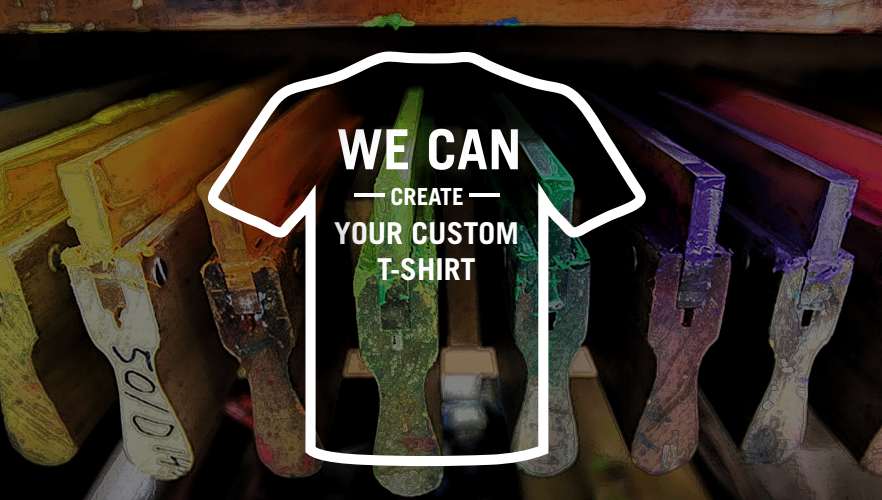Vintage Style Silk Screen Printing for Retro Fashion
Vintage Style Silk Screen Printing for Retro Fashion
Blog Article
Display Printing Uncovered: Every Little Thing You Required to Learn About Tee and Garment Printing Techniques
If you've ever questioned exactly how those vivid layouts finish up on your favorite t-shirts, you're in the best area. Screen printing is a fascinating technique that integrates art with method, supplying unlimited possibilities for imagination. Recognizing the fundamentals, from equipment to ink choices, can substantially influence your outcomes. Ready to discover the necessary components that make display publishing an art kind? Let's discover the details that can boost your jobs.
The Fundamentals of Display Printing: Exactly How It Functions
When you plunge into screen printing, you'll discover it's both a science and an art. At its core, screen printing entails producing a stencil, or display, that permits ink to go through just in particular areas (screen printing kit). You begin by selecting your design and preparing your screen with a light-sensitive solution. When you expose this solution to light, it solidifies, leaving your design as a negative space.
Following, you'll mix your inks and prepare your printing surface. Position the display over the textile, then make use of a squeegee to press ink via the screen onto the garment. This procedure needs accuracy, as you want clear, vivid prints. After printing, you'll cure the ink with heat, ensuring it abides by the fabric and lasts through cleans. Each step is necessary, and grasping them will raise your display printing skills, changing simple garments into one-of-a-kind, meaningful items.
Sorts Of Screen Printing Methods
As soon as you understand the essentials of display printing, it's time to explore the various methods that can boost your layouts. One popular method is standard display printing, where ink is pressed through a stenciled screen. This strategy is excellent for bold, lively shades. There's water-based ink printing, which offers a softer feel and is green, however it requires a various technique to healing.
Another option is plastisol printing, recognized for its resilience and vivid colors, making it a favorite for many brands. Experiment with halftone printing to create gradient impacts and complex layouts.
Essential Equipment for Screen Printing
To achieve magnificent results in display printing, having the best devices is fundamental. You'll require a durable display printing frame, which holds the mesh that moves your layout onto the garment. Next off, invest in top quality mops; these are vital for applying ink equally across the screen.
Picking the Right Inks and Materials
When picking inks and products for screen printing, you need to take into consideration the sort of ink that functions ideal for your job. Consider material compatibility to ensure your styles look wonderful and last long. Also, explore eco-friendly ink choices to make your printing procedure extra sustainable.
Sorts Of Display Inks
Choosing the ideal display ink is essential for achieving vibrant, resilient prints that fulfill your task's needs. There are a number of kinds of display inks to take a look at. Specialized inks, such as metallic or glow-in-the-dark, can include one-of-a-kind impacts to your layouts.

Fabric Compatibility Factors To Consider
Comprehending textile compatibility is crucial for accomplishing top notch display prints, specifically given that different materials react distinctively to various inks. When selecting inks, take into consideration the textile type-- cotton, polyester, or blends. For cotton, water-based inks work well, using soft qualities and breathability. Polyester, on the other hand, commonly requires plastisol inks for much better adhesion and dynamic shades. You could need to use a mix of both kinds if you're publishing on blends. Always test your inks on example fabric to assure they adhere correctly and keep color integrity. In addition, maintain in mind that fabric weight and appearance can influence the final outcome, so selecting the appropriate ink and material combo is vital for your task's success.
Eco-Friendly Ink Options
Environmentally friendly inks are becoming a prominent choice for display printers who intend to reduce their ecological effect while maintaining high quality. When selecting inks, consider water-based inks, which are less dangerous and simpler to tidy up compared to typical solvents. These inks bond well with materials, delivering vivid results without poisonous chemicals. You might additionally check out eco-solvent inks that utilize fewer unstable natural substances (VOCs), making them a much safer alternative for both your health and the planet.
Additionally, look for inks made from renewable energies, such as soy or vegetable-based alternatives. By picking the appropriate inks and products, you'll not just develop spectacular designs but also contribute to a much more sustainable printing process. Make you could look here the button, and your prints will certainly mirror your commitment to the environment!
Preparing Your Layout for Display Printing

File Style Demands
To guarantee your style looks sharp and lively on textile, you'll require to pay close attention to submit style needs for display printing. Make sure your style has a transparent background to avoid unwanted white sides on your prints. Keep shade settings in mind; CMYK is standard for display printing, so transform your RGB makes as necessary.
Shade Splitting Up Methods
Color splitting up is an important step in preparing your layout for screen printing, and understanding it can considerably boost your print top quality. You'll need to damage your design right into individual colors, as each shade needs a different screen throughout printing. This accuracy not just guarantees precise shade representation however also simplifies the printing process.
Resolution and Dimension
Achieving the best outcomes in screen printing begins with assuring your design has the ideal resolution and size. Ideally, your artwork must be at the very least 300 DPI (dots per inch) for sharp, clear prints. If you make use of reduced resolution, your end product could look less than professional and pixelated.
When it pertains to dimension, think about the measurements of your print location. Style your artwork to match the last print size, ideally producing it in the real measurements you'll be printing. In this manner, you'll avoid any kind of unexpected scaling problems.
Always inspect your style in both vector and raster formats. Vector graphics can be scaled without losing quality, making them perfect for display printing. Preparing properly will ensure your layout looks outstanding on every garment!
Step-by-Step Screen Printing Refine
Display printing is a dynamic process that permits you to develop lively styles on numerous surfaces. To obtain started, you'll require a display, solution, and your chosen ink.
Pour ink onto the screen and use a squeegee to push the ink via the pattern onto the fabric. Lift the screen meticulously and let the print dry. You have actually efficiently display printed your style.
Tips for Successful Display Printing Projects
While you're diving into your display printing jobs, keep in mind that prep work is crucial to success. Start by collecting all your materials-- inks, squeegees, garments, and displays. A clean work space aids stop unwanted errors, so clean up before you begin.
Following, confirm your art work is high-resolution and appropriately sized for your garment. Test your display for correct exposure and tidy it extensively to stay clear of smudges. see here now When mixing your inks, adhere to the supplier's guidelines to attain the best uniformity.
Throughout printing, apply also stress with your squeegee for consistent outcomes. Do not hurry; take your time to validate each print meets your criteria. After printing, let your garments completely dry entirely prior to handling or packaging them.
Finally, always maintain a sample of your help future recommendation. By doing this, you can examine your development and improve your strategies gradually. Happy printing!

Frequently Asked Questions
How much time Does It Take to Establish a Screen Printing Work?
Establishing a screen printing task typically takes around 30 minutes to an hour. You'll prepare the screens, mix inks, and adjust journalism. The time varies based on complexity and experience, so stay organized!
Can I Print on Different Textile Enters Using the Exact Same Strategy?
Yes, you can print on different material types utilizing the very same strategy, yet you'll need to adjust your inks and setups. Some materials take in ink in a different way, so experimenting assurances the ideal results for each product.
What Prevail Mistakes to Avoid in Display Printing?
When display printing, stay clear of usual blunders like using the incorrect ink, neglecting correct exposure times, or avoiding pre-press checks. Always examine your arrangement and maintain tidy screens to ensure high quality outcomes each time.
How Can I Effectively Clean and Keep My Screen Printing Tools?
To properly tidy and preserve your display printing equipment, you need to routinely clean displays with proper solvents, check mops for wear, and ensure all devices are kept completely dry and dust-free. Consistency avoids costly repair services and improves efficiency.
Is Screen Printing Eco-friendly Contrasted to Other Methods?
Screen printing can be more eco-friendly than various other techniques, particularly if you utilize eco-conscious materials and water-based inks. By selecting sustainable materials and methods, you minimize waste and lessen your impact on the world.
Screen Printing Uncovered: Every Little Thing You Required to Know Regarding T-Shirt and Garment Printing Strategies
At its core, display printing includes producing a stencil, or display, that allows ink to pass through just in specific locations. Position the screen over the fabric, then use a squeegee to push ink with the display onto the garment. One popular method is conventional screen printing, where ink is pushed through a stenciled screen.When choosing inks and materials for screen printing, you need to take into account the type of ink that functions ideal for your task.
Report this page